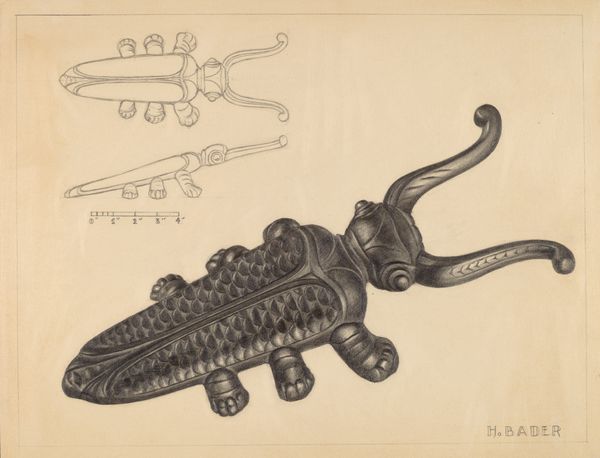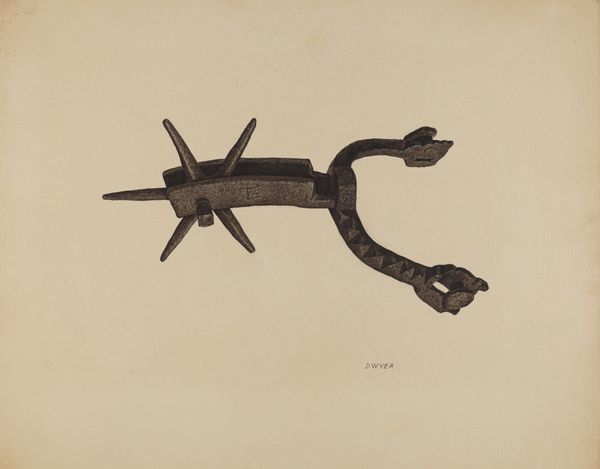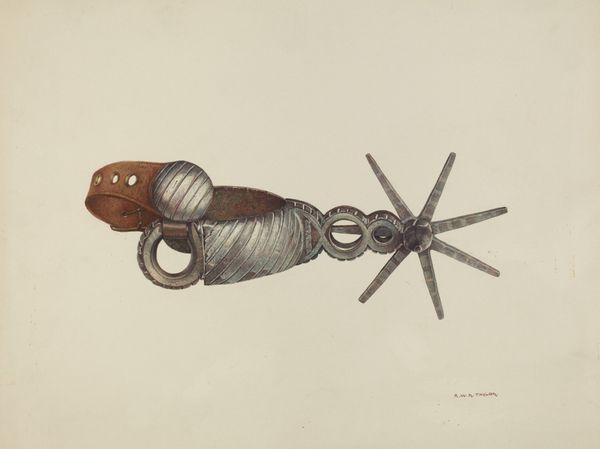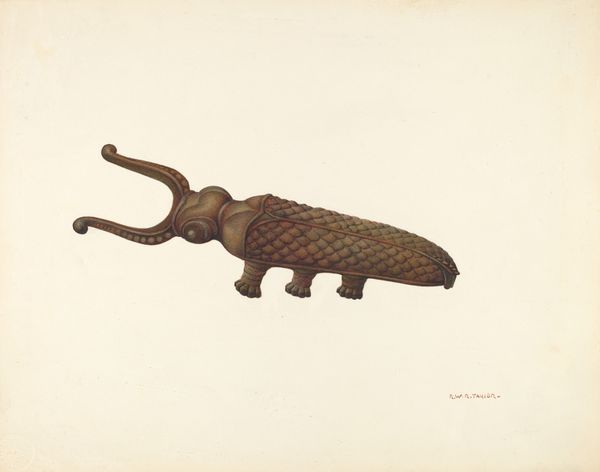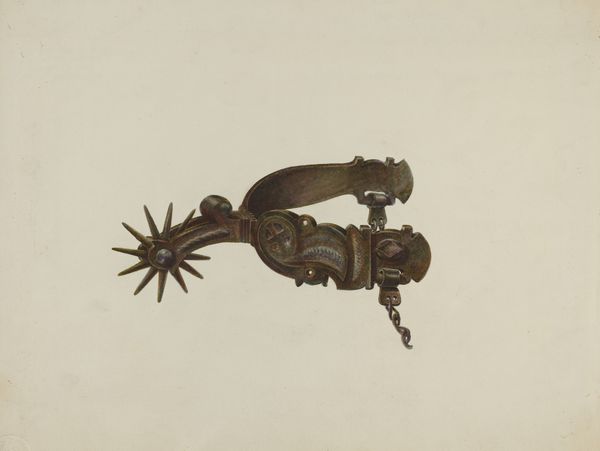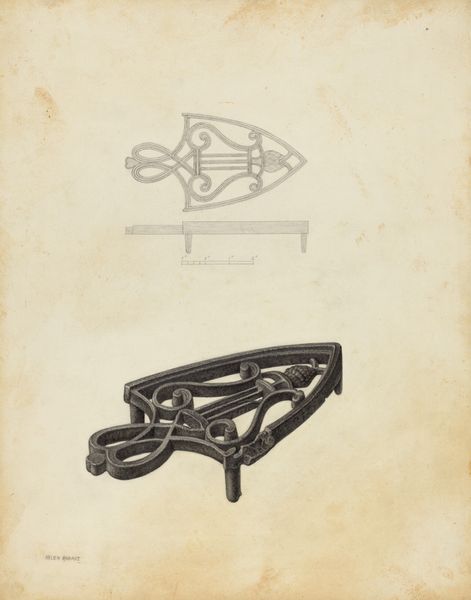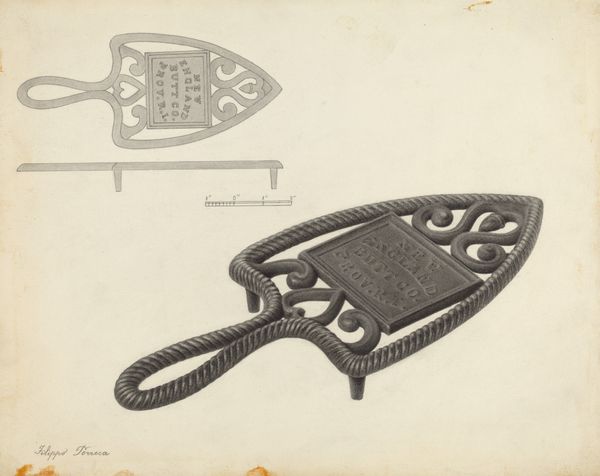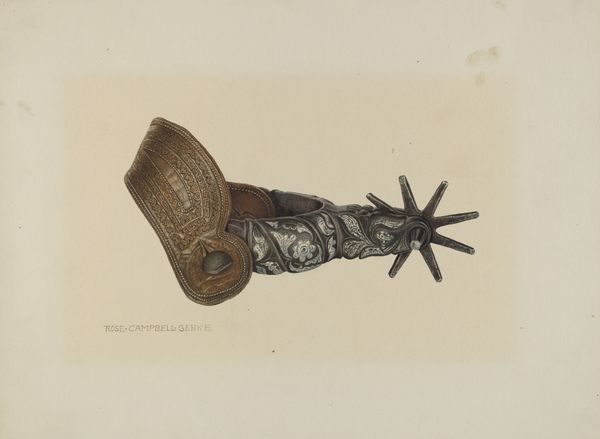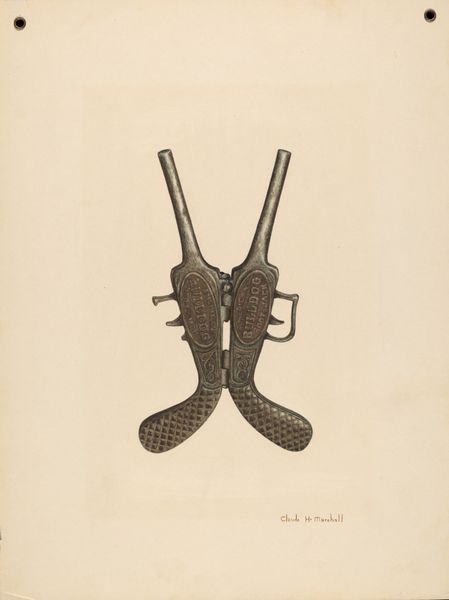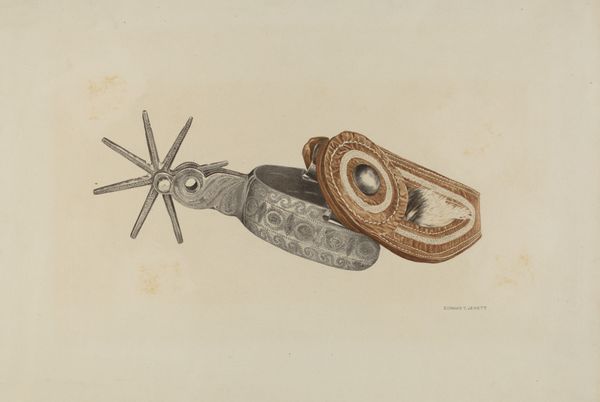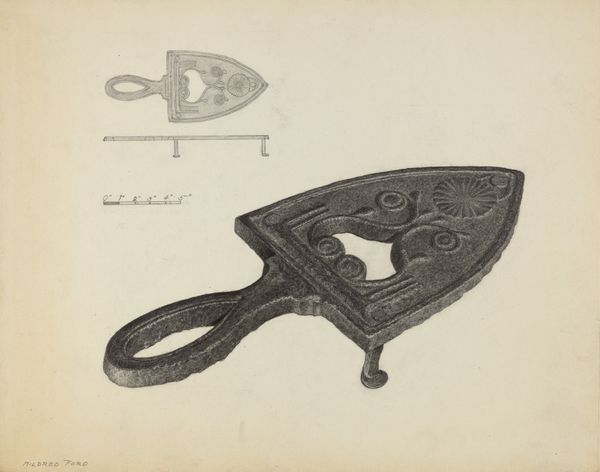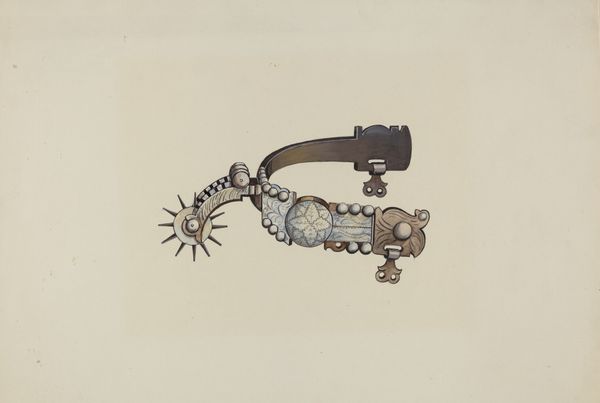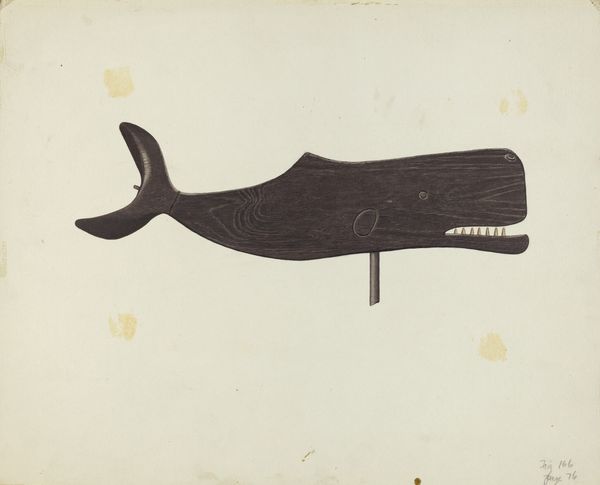
drawing, pencil
#
drawing
#
caricature
#
pencil drawing
#
pencil
#
academic-art
#
realism
Dimensions: overall: 36.6 x 38.5 cm (14 7/16 x 15 3/16 in.) Original IAD Object: 11" long; 4 1/2" wide
Copyright: National Gallery of Art: CC0 1.0
Curator: Here we have Elmer Weise’s pencil drawing titled “Bootjack,” created around 1937. What strikes you first about it? Editor: Immediately, I'm drawn to the composition—the two bootjack views arranged vertically, the crisp linework contrasting against the plain background, giving it a real sense of objecthood, almost sculptural. Curator: It's intriguing how Weise has elevated this everyday object. We have to think about how bootjacks served an important role, assisting with the removal of work boots and embodying aspects of labor. In making this, Weise asks the viewer to contemplate material culture of a specific time. Editor: True, but I can’t help focusing on how beautifully observed these objects are. Look at the precision in rendering the light and shadow, and the subtle gradations that give the metal weight. The formal elegance transforms a purely functional item into a thing of beauty. Curator: Absolutely, and I think that duality between function and form opens interesting dialogues on the social conditions for making such an item, because the form, and the very need to illustrate it, suggests certain level of specialized industrial output that allows Weise the very opportunity to document it. It transcends utility alone, becoming an artifact worth contemplating through the artistic labor of documentation. Editor: It makes me think about realism as a conscious aesthetic choice. The bootjack almost appears to float within its space—its presentation invites a semiotic reading where negative space plays into a reading of function versus image. The artist encourages us to decode it. Curator: Yes! What this work and other "realistic" drawings often do is really foreground a changing relationship with material reality. New manufacturing techniques in the 30s increased the proliferation of "everyday objects," changing its relationship with labor. The formal attention is, in itself, an embrace of material abundance. Editor: The way that line work gives way to soft shading on some curves reminds us, again, that what may look ordinary holds a great deal of nuanced consideration when you look closely. Curator: Absolutely, seeing an image like this prompts reflection on consumerism, and how seemingly insignificant things carry bigger socio-economic echoes. Editor: I leave with a reminder to always see value in observing everyday things with purpose.
Comments
No comments
Be the first to comment and join the conversation on the ultimate creative platform.
